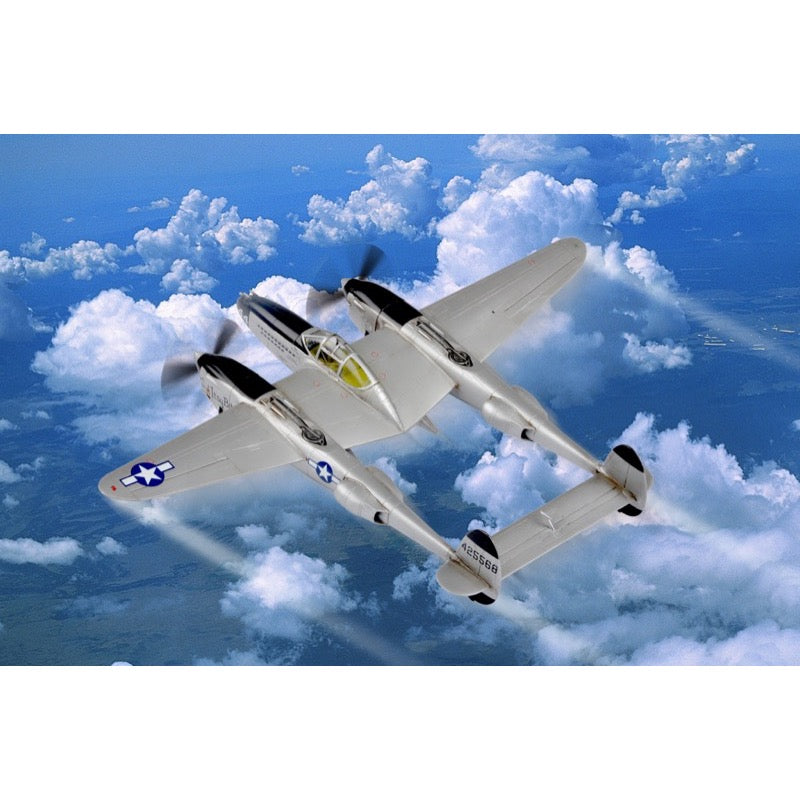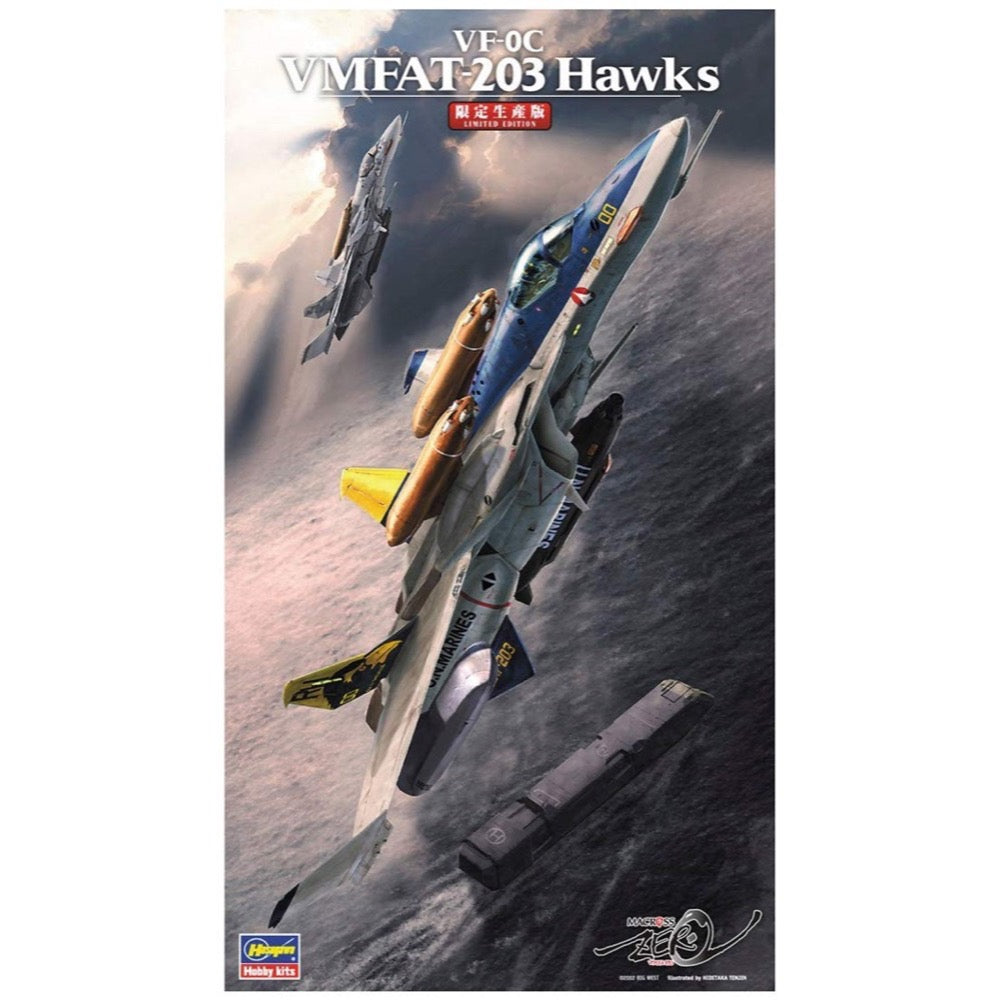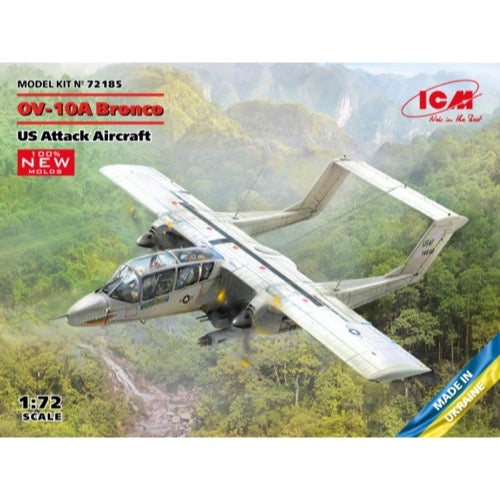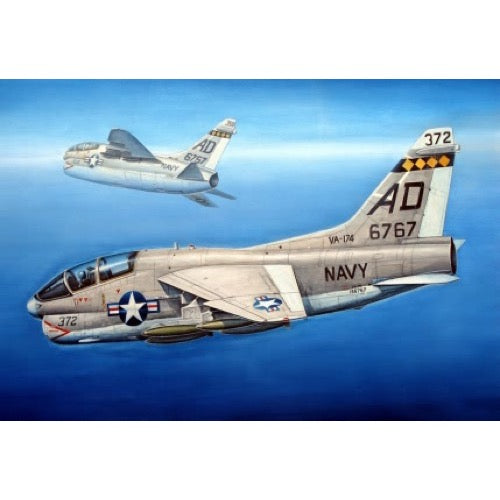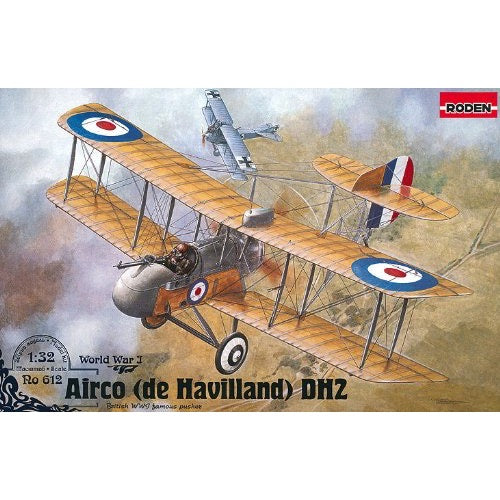
Roden 612 1/32 Airco De Havilland DH.2
35.00
$
<p>At the beginning of WWI many aircraft manufacturers experimented with the construction of 'pusher' types, in which the propeller was fitted behind the cockpit. This arrangement had been familiar since the earliest days of aviation, because the Wright Brothers' machines had also been of the pusher type. Various builders such as the Royal Aircraft Factory pursued an interest in pushers, and also Airco, led by the talented engineer Geoffrey de Havilland. He designed the D.H.1 in 1914, which was produced in small numbers and regarded favorably. In particular, the successful construction of this pusher airplane spurred de Havilland to continue experimenting with the formula. </p>
<p>The appearance of the first true fighter, the Fokker E. III, in the skies of the Western Front, forced the British to search for an adequate answer. It possessed a synchronized gun and seemed to be the Royal Flying Corps' nemesis. While the secret of the synchronized gun remained out of reach, the only practical solution was to fit a forward firing weapon to an airplane with a propeller behind the pilot. De Havilland took the D.H.1 as a starting point and scaled it down, leaving the aerodynamic form essentially the same. The only notable change was the fitting of a new engine; instead of the in line Beardmore, a 100 h.p. Gnome Monosoupape rotary engine was installed. </p>
<p>The first flight of the new fighter was in 1915. Later, it was sent to the front in France for trials, where it was quickly shot down; however, in spite of this unpromising start the airplane was accepted for service, and in the autumn of 1915 it entered series production. </p>
<p>In January 1916 the fighter squadrons began to re-equip with new types, and No. 24 Squadron of the R.F.C. was the first to receive the D.H.2. With its appearance in the skies of the Western Front, so ended the era of the Fokker monoplanes' dominance. During the first few months, 24 Squadron alone downed 44 of the enemy's airplanes, and the total of victories steadily grew. Pilots noted its propensity for occasionally fatal spins, and its slow speed, but it was a formidable threat for the German Fokker in a maneuvering duel. </p>
<p>In the autumn of 1916 Germany produced an answer for Britain: the famous Albatros D.I. appeared. It instantly made the D.H.2 obsolete, and at the end of that year the D.H.2 was transferred to the 'softer' theaters of Palestine and Macedonia. </p>
<p>The most famous pilots who flew on this type were Lanoe Hawker, V.C.; Alan Wilkinson; and also the commander of 32 Squadron, Lionel Rees, who was awarded the Victoria Cross for a heroic fight against ten German airplanes in which he destroyed two. </p>
<p>At first, the aircraft's armament consisted of a movable gun installation fitted in front of the pilot. Soon, they rejected this installation in favor of a fixed gun, because it became clear that trying to operate a flexible gun during maneuvering was hopelessly unmanageable, while directing the whole airplane at the target was a much better way of aiming it. So, on the basis of the D.H.2 pilots' experience, the movable gun was soon seen to be an anachronism and they replaced it on all the machines in which it was fitted. </p>
<p>450 fighters of the type were built overall during 1916, the great majority of which served in the skies of the Western Front. However, by the beginning of 1917 the D.H.2 remained only in training establishments, and on active service in the skies of the Near East. </p>
<p>This airplane played an important role in the development of British aviation: it ended the dominance of the Fokker in the air and was an important stage on the way to powerful, capable fighters of conventional traction design and with synchronized weapons. </p>
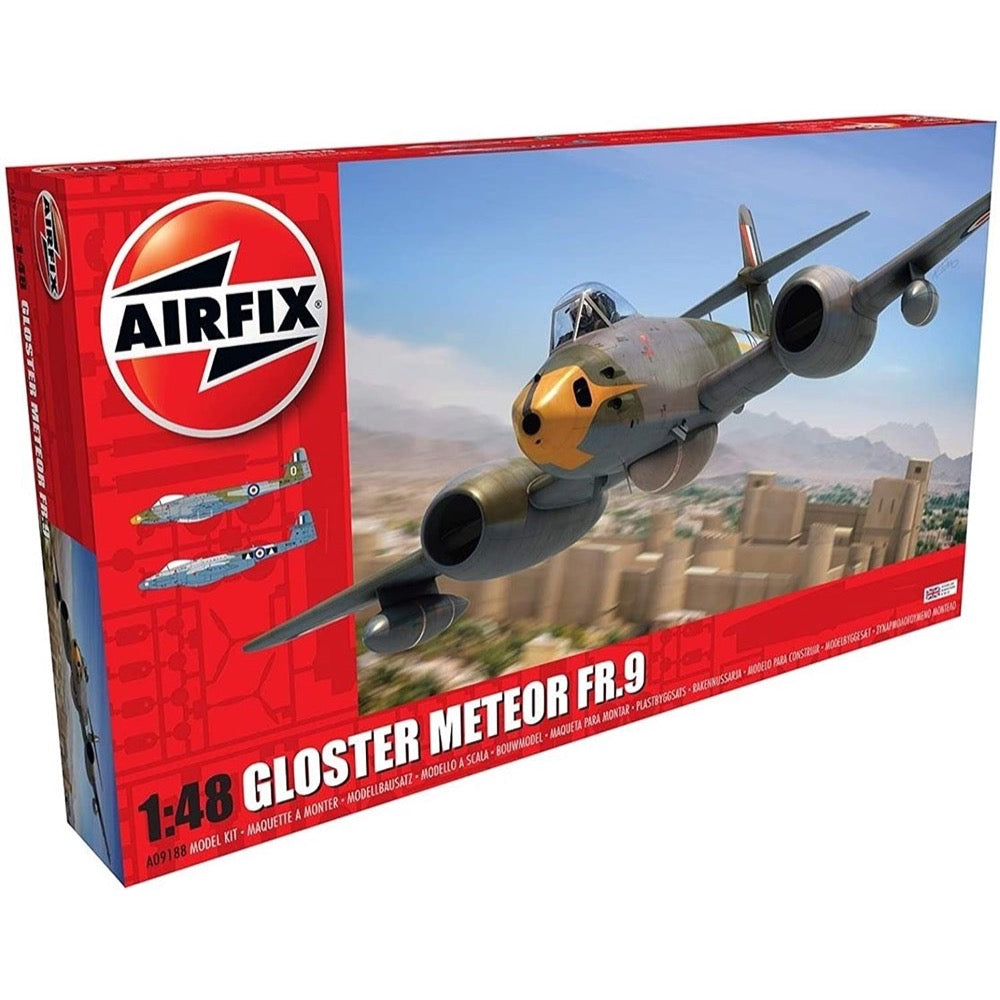
Airfix A09188 1/48 Gloster Meteor FR9
36.00
$
<p>The Gloster Meteor is a British single-seater, twin-engine, full-metal fighter jet from the end of World War II. The flight of the prototype took place on March 5, 1943, and the machine began to hit the linear units in the summer of 1944. The 616 squadron RAF was the first to receive aircraft. George Carter was in charge of the entire project. The prototypes used the de Havilland Halford H.1 engine, but the series aircraft used Rolls-Royce Derwent I engines. The Meteor was the first mass-produced Allied jet fighter and the second in the world - after the Me262. During World War II, it was used primarily to combat V1 flying bombs. It is worth noting that in the course of the hostilities, there was never a single air fight between a Meteor and any German plane, despite the fact that on the ground the Gloster company annihilated about 40 enemy machines. The plane was also heavily used after 1945, especially by Australian troops during the Korean War. In total, a dozen or so versions of this machine were created, the most widely produced of which are: F.3 and F.4 (fighter-bomber versions from World War II), T.7 (two-person, training version, created in 1948), F. 8 (improved version of the F.4, in service from 1950). Technical data: length: 13.59m, wingspan: 11.32m, height: 3.96m, maximum speed: 965km / h, climb speed: 35.6m / s, maximum range: 965km, maximum ceiling 13,100m, armament: permanent - 4 20mm Hispano cannons, sling - up to 908 kg of bombs or unguided rockets.</p>
<h4>Includes</h4>
<ul>
<li>Sprues</li>
<li>Decals</li>
</ul>
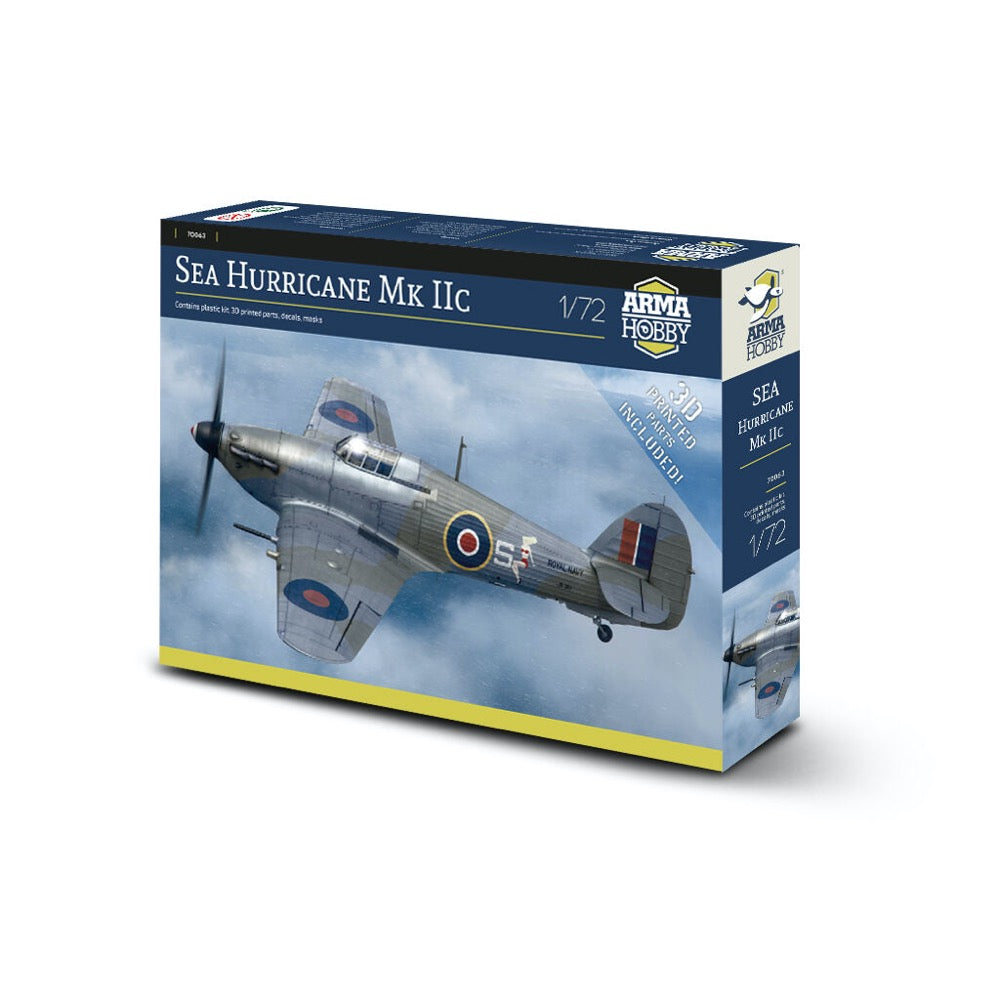
Arma Hobby 70063 1/72 Sea Hurricane Mk.IIc
20.00
$
<p>In the spring of 1941, deliveries of Hurricane IIc fighters to the RAF began. The Navy was then introducing older Mk I machines, „navalised” as Sea Hurricane Ib. They had weaker engines and 8 machine guns. They lacked power, and the bulk of naval equipment already took away their agility. The cannons were too heavy to be installed. However, the queue for the more powerful Hurricane IIc was long, they were used in the Middle and Far East and sent to the USSR. Only the dramatic course of Operation Pedestal – escort of the Malta convoy in August 1942 - finally convinced the command that the cannon-armed Hurricanes were necessary on aircraft carriers.</p>
<p>They were first used in combat in Operation Torch - landing in North Africa, where Sea Hurricane IIb, adapted to the IIc standard by installing wings with cannons, were embarked on aircraft carriers. The production Sea Hurricane IIc was equipped with a Navy radio and IFF and the arrestor hook. Catapult spools were not used, so the flaps were not shortened. The wings were not foldable. During service, undercarriage covers were trimmed to prevent them from catching on the arresting cables. Underwing fuel tanks greatly increased the range. Rockets were sometimes used in the fight against U-boats.</p>
<p>Sea Hurricane IIc operated from escort aircraft carriers, as fighters, and as part of anti-submarine units. The cannons allowed them to effectively attack surfaced U-boats as well as heavy German reconnaissance planes, although they were also effective in defending the aircraft carrier against an attack by the Me-110!</p>
<h3>Includes</h3>
<ul>
<li>Arma Hobby Hurricane Mk.I injected plastic sprues<br>
</li>
<li>3D printed set with fuselage bottom, arrestor hook, exhausts , mirrors, 20mm gun barrels<br>
</li>
<li>Decal with 3 marking options<br>
</li>
<li>Painting masks for the canopy (kabuki paper)</li>
</ul>
<h3>Marking options</h3>
<ul>
<li>Sea Hurricane Mk IIc – 825 Squadron, HMS Vindex, early 1944<br>
</li>
<li>Sea Hurricane Mk IIc - 835 Squadron, HMS Nairana, pilot Sub Lt. A.R. Burgham, June 1944<br>
</li>
<li>Sea Hurricane Mk X - 804 Squadron, HMS Dasher, operation Torch, late 1942 </li>
</ul>
<!---->
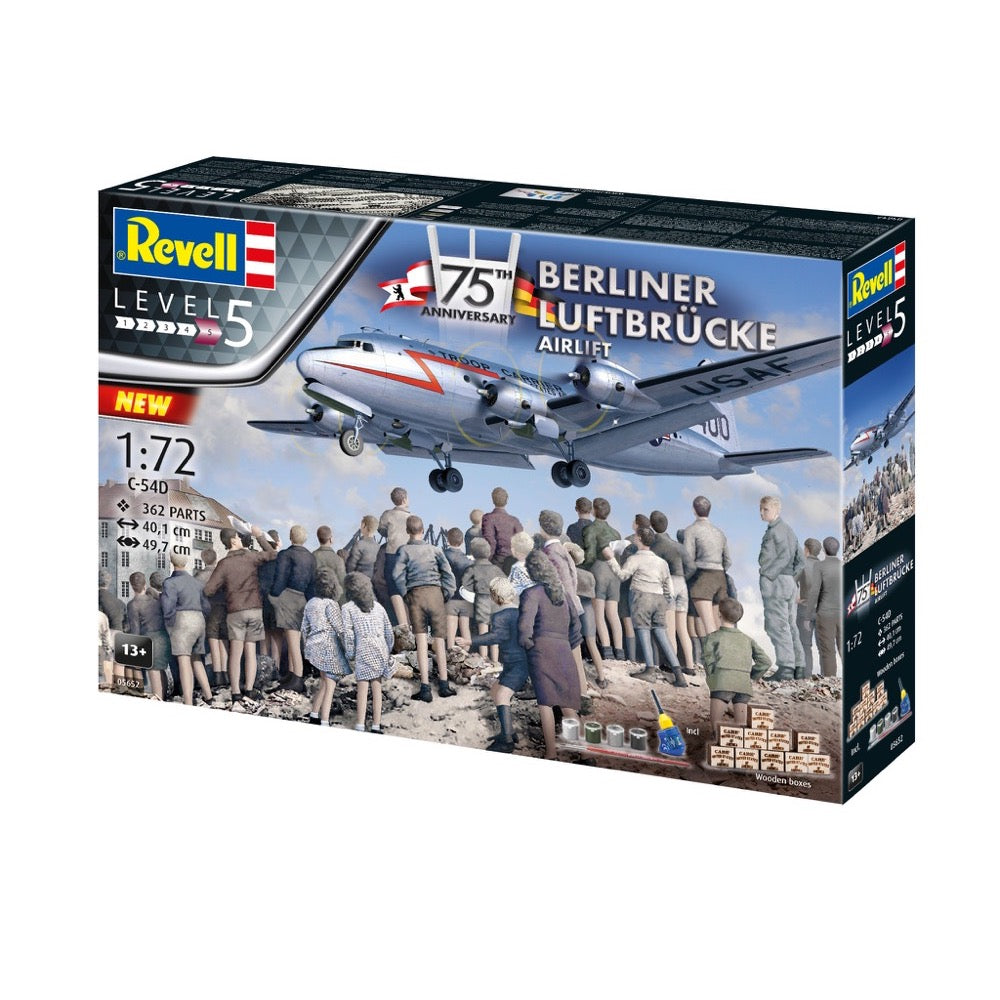
Revell 05652 1/72 75th Anniversary Berliner Luftbrucke
57.00
$
<h3>Experience history up close with the detailed model kit - 75th Anniversary of the Berlin Airlift in 1:72 scale!</h3>
<p>Bring history to life with our lovingly designed 75th Anniversary Berlin Airlift model kit. Recreated at 1:72 scale, this model features a breathtakingly accurate recreation of the legendary C-54D Skymaster, better known as the "Candy Bomber". With 352 precisely manufactured parts and a wingspan of 497mm, this model is sure to be a highlight of any collection. Although we give a recommended age of 13, this model is a must-have for any history buff or model building enthusiast.</p>
<p>This model kit is perfect for beginners looking to expand their skills, as well as experienced model builders looking for a new challenge. It can be used as a display piece, to hone your model making skills, or to add to your collection.</p>
<p>This model kit is characterized by its detailed replica and high-quality workmanship. The set also includes pre-assembled parts and authentic decals to represent four different versions of the C-54D Skymaster. The highlight of this set is the exclusive poster and the 10 laser-cut wooden cubes, which allow for individual design.</p>
<p>The Raisin Bomber played a crucial role during the Berlin Blockade of 1948/49. With the establishment of the airlift, the Western Allies succeeded in securing supplies for the trapped population of West Berlin. This model kit gives you the opportunity to recreate and preserve a piece of this historical event.</p>
<p>With this model kit of the legendary candy bomber you hold a piece of living history in your hands. Immerse yourself in the world of model building and experience the fascination of this detailed replica.</p>
<p><em><strong>DANGER</strong>. Not suitable for children under 8 years old. Solvent based glue (12.5g) and water soluble paints included. Glue bottle with a functional, sharp tip! Flammable liquid and vapour. May cause drowsiness and dizziness. Keep locked up. Dispose of in accordance with local/regional/national/international regulations. Use under adult supervision. Read the instructions with your child before use, follow them and keep them ready for reference. Contains: n-butyl acetate CAS 123-86-4</em></p>
<h3>Scope of delivery</h3>
<ul>
<li>
<p>Plastic model kit (unassembled)</p>
</li>
<li>
<p>Illustrated, multilingual assembly instructions</p>
</li>
<li>
<p>Detailed decals</p>
</li>
<li>
<p>Exclusive poster for the Berlin Airlift</p>
</li>
<li>
<p>Basic colors (Revell Aqua Color)</p>
</li>
<li>
<p>Adhesive (Revell Contacta Professional Mini)</p>
</li>
<li>
<p>High quality model making brush</p>
</li>
<li>
<p>10 laser-cut wooden cubes for individual design options</p>
</li>
</ul>
<h3>Specifications</h3>
<ul>
<li>
<p>Age recommendation:13+</p>
</li>
<li>
<p>Number of parts:352</p>
</li>
<li>
<p>Length:401mm</p>
</li>
<li>
<p>Span:497mm</p>
</li>
</ul>
<p> </p>
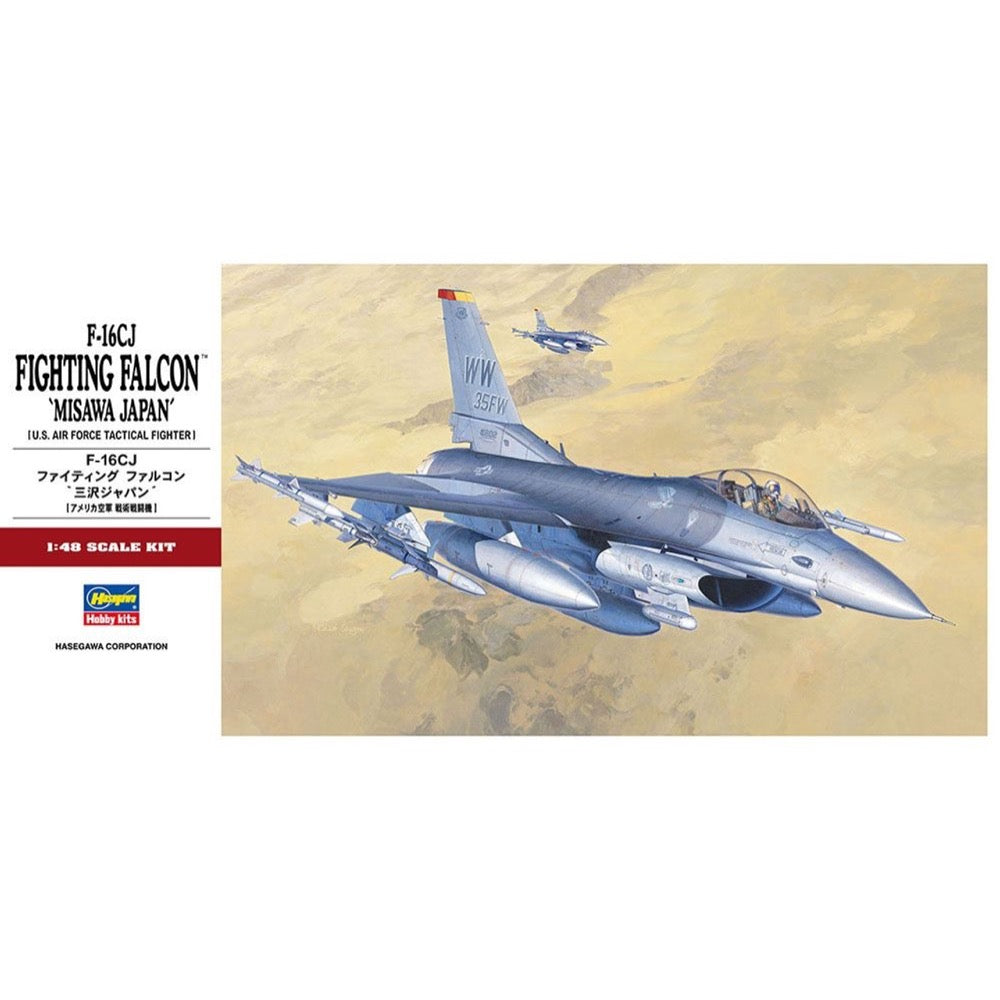
Hasegawa H07232 1/48 F-16CJ Fighting Falcon Misawa Japan
17.00
$
<p>Limited reissue of the Hasegawa 1/48 scale F-16CJ kit with decals to mark it as either a Fighting Falcon of the 35th Fighter Wing based at Misawa AB, Japan, or a plane of the 20th FW based at Shaw AFB, South Carolina.</p>
<p>The F-16C Fighting Falcon is a tactical fighter developed from the F-16A PLUS.</p>
<p>Since the F-16 was first adopted by the U.S. Air Force,<br>it has been undergoing improvements based on the Multi-Phase Improvement Program (MSIP). In the F-16C, the radar fire control system has been upgraded from the APG-66 to the APG-68 in order to improve target search and identification capabilities.</p>
<p>In addition, the new AIM-120 (AMRAAM) missiles have been added, allowing for simultaneous attacks on multiple targets,<br>greatly improving the aircraft's air combat capabilities. The engine bay has been improved so that the aircraft can be equipped with either<br>the Pratt & Whitney F-100 or the General Electric F-110 engines. Externally, the vertical tail root, which houses the ECM equipment, has been extended forward, giving it a large bulge.</p>
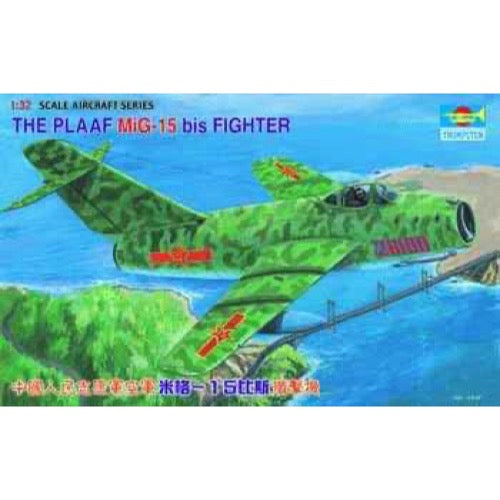
Trumpeter 02204 1/32 The PLAAF MiG-15 bis Fighter
17.00
$
<p>The MiG –15bis Fighter is the further development of the MiG-15 aircraft. It had added with more powerful engine. The PLAAF introduced it in 1952. It had made heavy losses on the F-86 fighters of USAF relying its super performance during the Korean War in 1950, In operations of territorial air defence had shat down one P2V reconnaissance airplane of KMTAF, Wang Hai had flown the MiG-15bis and shot down/damaged 9 enemy planes on during Korean War.</p>
<p>Unassembled plastic model kit. Paints and glue not included.</p>
<h3>Contents</h3>
<ul>
<li>Plastic sprue (Clear), Plastic sprue, Rubber, Decalsheet (waterslide)</li>
</ul>
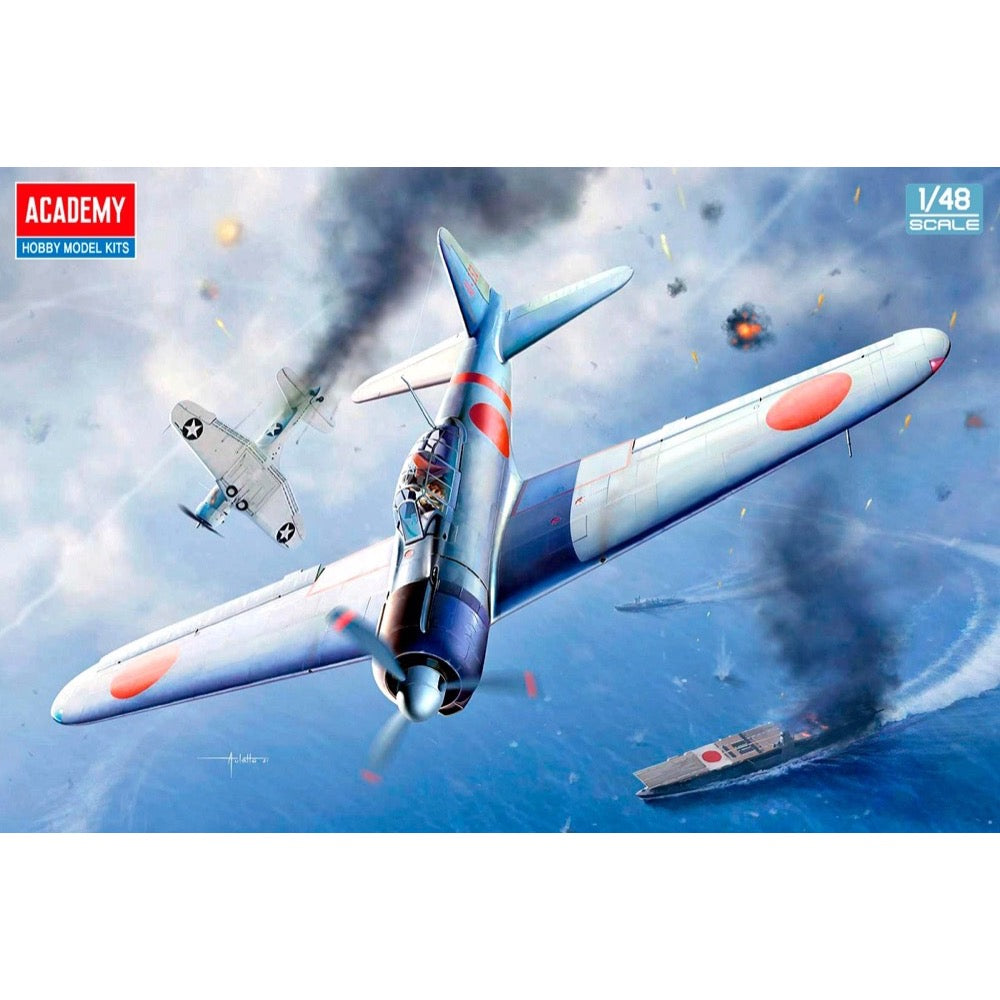
Academy 12352 1/48 A6M2b Zero Fighter Model 21 "Battle of Midway"
22.00
$
<h3>This model kit of the Zero Fighter Type 21 from Academy is a new mold!</h3>
<p>The canopy can be built opened or closed; the wingtips, flaps and ailerons are separate parts that can be assembled in any position. The cockpit interior and the landing gear are also precisely reproduced, and decals for five versions are included too.</p>
<h3>Specifications</h3>
<ul>
<li>Size: 18.8cm long, 25cm wingspan when completed</li>
<li>Includes: Decals for 5 versions</li>
</ul>
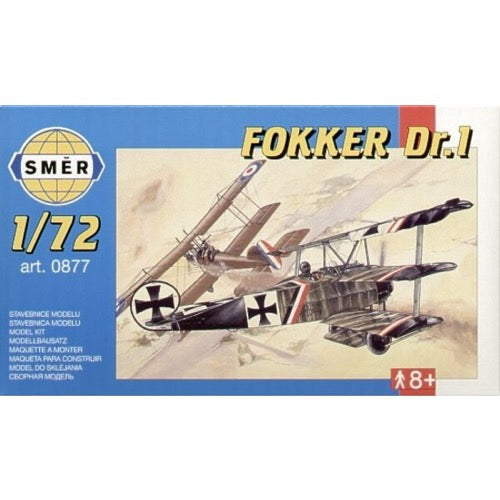
Smer 72877 1/72 Fokker Dr.I Triplane with Decals for Lt Baumer
9.00
$
<h3>Fokker Dr.I</h3>
<p>Aircraft model Fokker Dr.I Triplane with decals for Lt Baumer - Jasta 2 Boelcke February 1918</p>
<h3>Specification</h3>
<ul>
<li>Scale: 1:72</li>
<li>Marking: 2</li>
<li>Number of parts: 35</li>
<li>Length: 8,1</li>
<li>Span (cm): 10</li>
</ul>


